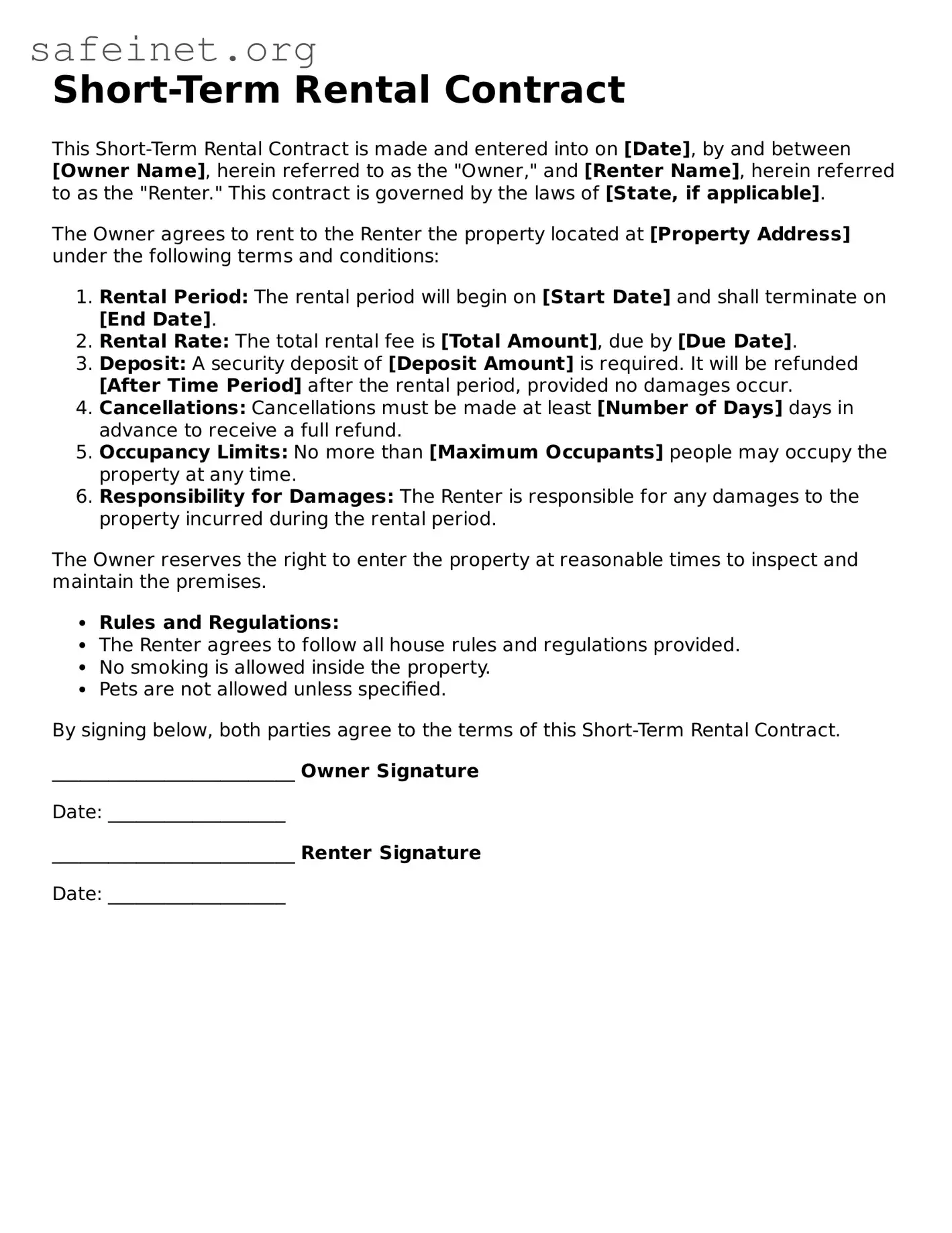What is a Short-Term Rental Contract?
A Short-Term Rental Contract is a legal agreement between a property owner and a tenant for the temporary rental of a property. This contract outlines the terms, such as rental period, payment, and responsibilities of both parties. It's crucial to have clear expectations defined in this document to avoid disputes later on.
What details should be included in the contract?
The contract should specify the property address, names of the parties involved, rental duration, total rental fee, payment method, and deposit requirements. Additionally, rules regarding guest behavior, maintenance obligations, and cancellation policies should also be included to ensure clarity.
How long can the rental period be?
The rental period in a Short-Term Rental Contract typically ranges from a few days to a few months. However, local regulations often dictate what constitutes a short-term rental. It's important to check local laws to ensure compliance.
Can I make changes to the contract after it’s signed?
Yes, changes can be made, but both parties must agree to and document these modifications. It’s advisable to create a written amendment and have both parties sign it to avoid any misunderstandings in the future.
What happens if a guest damages my property?
The contract should address liability for damages. Typically, the tenant agrees to pay for any damages that occur during their stay. Having a security deposit can serve as a safeguard, allowing the property owner to cover repair costs without additional legal procedures.
Is insurance required for short-term rentals?
While not always legally required, obtaining insurance is highly recommended. It protects both the property owner and the tenant from potential liabilities. Check with your insurance provider to discuss options that suit short-term rentals.
What should I do if the tenant breaches the contract?
If a tenant breaches the contract, the first step is to communicate the issue directly. Depending on the breach, you may need to give them a written notice and a chance to remedy the situation. If unresolved, it might be necessary to take legal action to enforce the contract terms.
How can I ensure the contract is enforceable?
To enhance enforceability, ensure the contract is clear, specific, and signed by both parties. It may also be prudent to have a witness or notarization, depending on state laws. Consulting a legal professional to review the contract can provide additional assurance.
